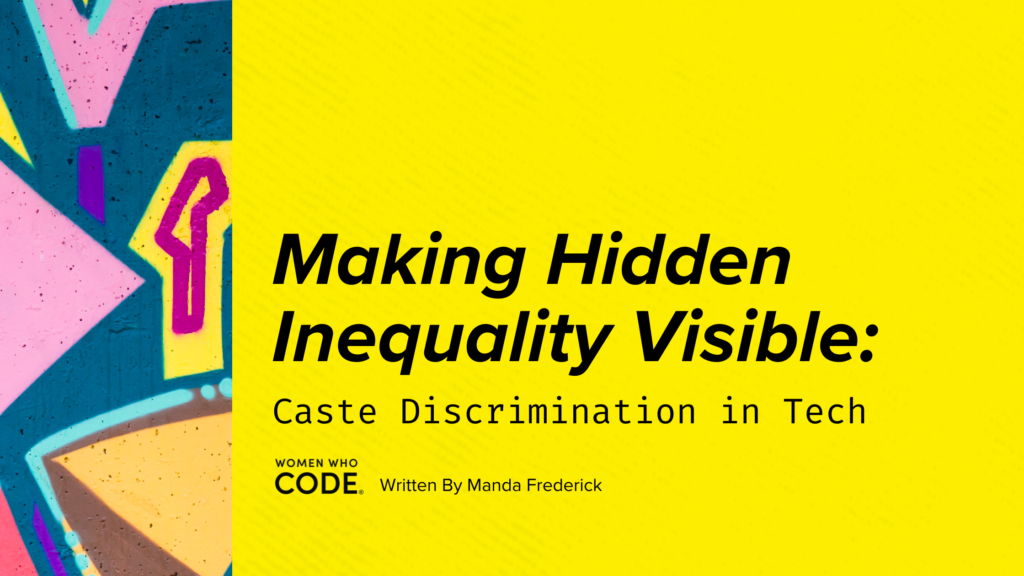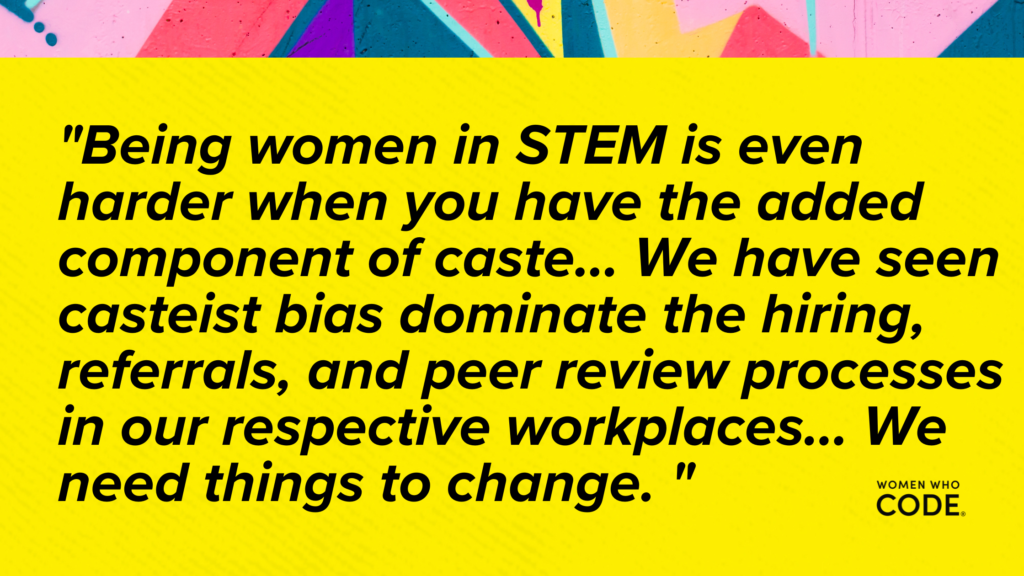Making Hidden Inequality Visible: Caste Discrimination in Tech
Written by Manda Frederick

On Tuesday, September 5, 2023, California became the first U.S. state to pass a bill banning discrimination based on caste. Bill SB 403 effectively protects caste as a form of ancestry under state civil rights law, extending the protections to education and housing codes.
“Caste” systems are a social and economic organization in which people inherit a social group (caste) at birth; this practice is widely seen across South Asia. The foundation of caste-organized societies is rigid inequality, where those in “upper” castes have ample rights and fewer duties, and those in “lower” castes have fewer rights and ample duties.
Members of lower castes face life-long discrimination and exclusion, including employment discrimination, access to education and social services, social segregation, exploitation like debt bondage or sex trafficking, lack of political representation, stigmatization, and violence.
The passing of SB 403 is just one recent measure to address caste discrimination in the U.S.; just in February of this year, Seattle became the first U.S. city to ban caste discrimination, three years after numerous employees, including Dalit female technologists from major tech giants such as Google, Apple, Microsoft, and Cisco, came forward with distressing accounts of workplace injustices. These accounts included unequal pay, withheld promotions, and instances of ridicule based on their caste heritage.
The issue has been explicitly elevated in states on the West Coast of the U.S. because of an important common element: Tech bubbles.
In their open letter to the tech world, focused on Silicon Valley, 30 Dalit female technologists wrote, “Being women in STEM is even harder when you have the added component of caste… We have seen casteist bias dominate the hiring, referrals, and peer review processes in our respective workplaces… We need things to change. We are good at our jobs, and we are good engineers.”
As of 2021, over 5.4 million people of South Asian descent live in the U.S., and despite residing in a country that promises rights, freedom, and social mobility, many in the South Asian community, like the Dalit engineers, are finding that discrimination has followed them here.
Despite being illegal in parts of South Asia like India, some 260 million people are affected by these caste systems — that’s over 3% of the people on Earth. Caste systems are particularly problematic because they are hereditary and nonnegotiable — this discrimination is assigned to you at birth based on the lottery of your parentage and follows you until death.
Some South Asian descendants born and living in the U.S. aren’t even aware of their “caste” until they are outed and face discrimination from privileged-caste individuals.

Shahira Kaur, a Dalit — the “lowest” level of caste hierarchy — said, “My family never talked about caste or told me about us being Dalit.” But then a high school friend’s mother outed her, and her South Asian friends ended their friendship, one person refusing to even sit with her at lunch because she was “dirty.”
Caste Discrimination in Tech
Caste hierarchies are rigidly enforced through discrimination and ostracization, specifically with the “Dalit” caste (formerly called the “untouchables”). Participants agree to maintain the hierarchy or face social, legal, and financial consequences.
Recent studies by groups like Equity Labs have revealed that U.S.-based Dalit caste members report discrimination at work, school, and in their communities.
But why do tech and tech bubbles like Silicon Valley take center stage on caste discrimination?
In a 2022 interview, Thenmozhi Soundararajan, executive director of Equality Labs, said, “I think it’s who works in tech. Wherever South Asians are, they bring caste with them… Think about Google, Microsoft, Twitter, Meta — their largest market isn’t the United States. It’s in India. So they’re hiring Indian and South Asian engineers to help them penetrate that market but without the legal protections to protect the global workforce that’s facing caste in all of its different dimensions.”
It’s hard to know exactly how many South Asian technologists make up the tech industry, but most figures put the number at over 25%.
Raising awareness about caste discrimination in tech and acting as an ally is critical for three reasons:
- As of this month, only one U.S. state has officially protected individuals based on caste.
- Many Dalits still fear the consequences of being Dalit or outing themselves, so they remain silent.
- Caste is not well understood by U.S. culture, with employees who face discrimination unable to start conversations with management or Human Resources.
As a community, we are responsible for empowering all technologists to excel safely, authentically, and with dignity in their tech careers. Because “when you live your life in the closet,” said Soundararajan, “there’s a part of you that’s never really human.”
The Women Who Code Code of Conduct includes caste as a protected community where all technologists are empowered to learn and connect safely. Read the Code of Conduct here, and learn how to report any incidents for yourself or others.
Learn more about caste discrimination in tech and globally and how you can get involved:
- A Statement on Caste Bias in Silicon Valley from 30 Dalit Women Engineers
- California Passes Bill Banning Caste-Based Discrimination
- Inside Silicon Valley’s Reports Of Casteism and Racism
- Insight: Caste in California: Tech Giants Confront Ancient Indian Hierarchy
- International Dalit Solidarity Network
- ‘Ours Is Part of the American story’: 5 South Asian Tech Leaders get Real About Pain, Privilege and Power
- Seattle Becomes First U.S. City to Ban Caste Discrimination
- Silicon Valley Has a Caste Problem